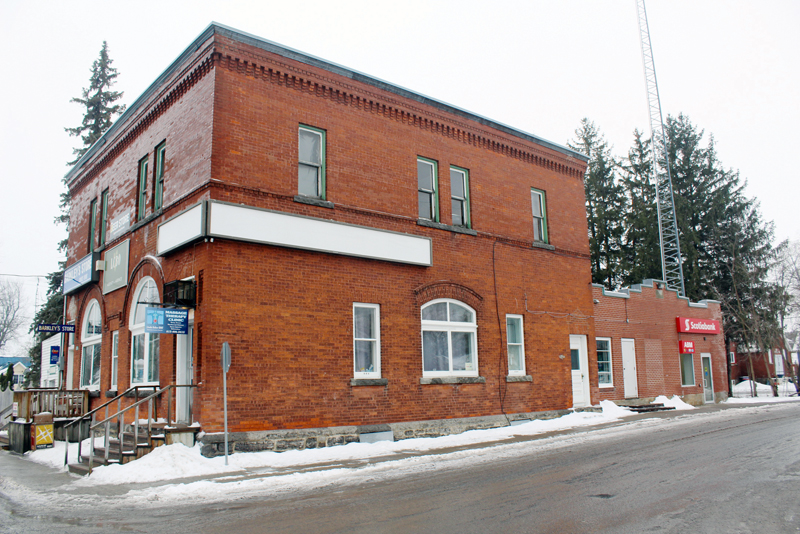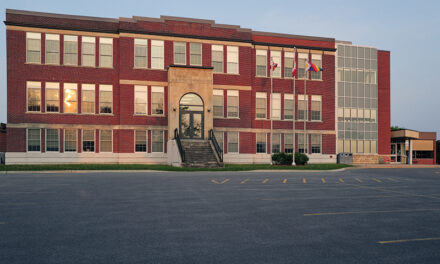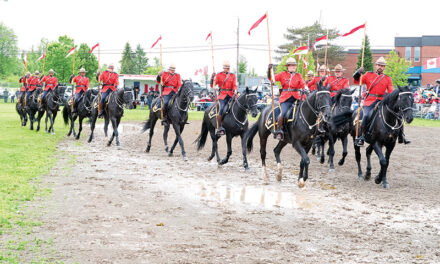Serving the community
The Begg Building has served the community of Avonmore since its construction in 1903. Thompson Goddard photo
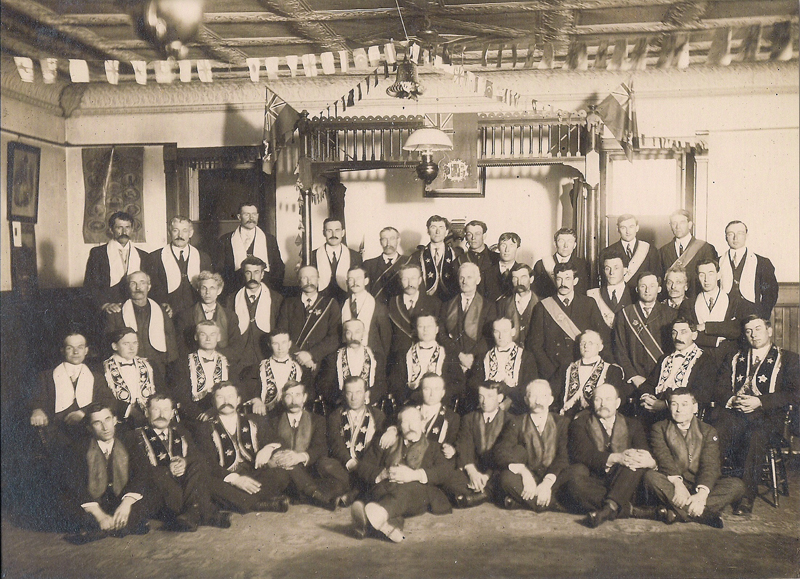
Murray Barkley provided this rare photo of Avonmore’s first Oddfellow’s Hall located on the second floor of the Begg Building above the Bank of Ottawa and Wyatt’s Drug Store dated to circa 1905 by Barkley.
Courtesy photo
AVONMORE – At the corner of Fairview and Main Street in Avonmore stands a building which for over 110 years has been a community gathering place.
The original brick building, which local historian Murray Barkley of Avonmore refers to as the Begg Block, was built in 1903 by J.M. Begg. The north side of the building was specifically constructed to operate as the local branch of the Bank of Ottawa and adjacent to the bank was Wyatt’s Pharmacy.
According to Barkley, the years between the arrival of the CPR in 1886 and First World War were a boom time for Avonmore. The coming of the railroad enabled the community to grow by leaps and bounds. He explained how just over 60 businesses were located on the village’s Main Street, and included “W.J. McCart’s ‘Good Luck’ Store, A.O. Miller’s ‘Beaver Hall’ Store, Oscar Fulton’s and John Wert’s General Stores, butcher shops, bakeries, four blacksmiths, three hotels, four churches, jewellery and millinery shops, sawmills, a flour and grist mill, cheese factory, barbershops, and ice cream parlours.” Murray continued the Cornwall Standard reported in June 5 and 19, 1903, how “several flat carloads of brick destined for J.M. Begg’s new building on Main Street” arrived in Avonmore.

Mike Brown, who with wife Johanne own Barkley’s Store, points out the three intertwined rings, a symbol dating to the time when the hall was used for I.O.O.F. meetings which stood for Friendship, Love and Truth. To enter the hall, one had to pass through two doors with peep holes in the centre that when combined with a special knock and passwords insured only members would be admitted. Behind Brown, the peep hole in the centre of the inner entrance door can be seen.
Thompson Goddard photo
Barkley has a wealth of information about the Begg Block, in which his grandfather Willis Barkley rented the Barkley Store premises in 1908. Willis purchased the entire building in 1919, and the Barkleys owned it until Murray retired in 2014. His family operated Barkley’s Store in the southern portion of the building while the Bank of Ottawa, which in 1919 became the Bank of Nova Scotia, operated in the northern portion until it moved into a new building across the street in 1974.
Barkley explained that located in the bank is the eight by eight by eight foot vault which was constructed of solid steel with its base being of solid stone; that, he feels would have made it almost impregnable. According to Barkley there was only one robbery attempt on the bank which occurred in 1956 when robbers made an unsuccessful attempt to access the vault using an acetylene torch.
The upstairs of the building which over the past eighty years has been used as a storage area for Barkley’s Store, served as a local meeting place for community organizations such as the Independent Order of Oddfellows Lodge and the United Farmers of Ontario, as well as the office for Avonmore’s dentist, Dr. McKercher who ceased practicing in this community after the First World War ended.
Between 1903 and 1913, the I.O.O.F. met in the upstairs room where a double entry system ensured that only members could gain access. Barkley explained when a member of the Oddfellows wished to enter the hall, a special knock would allow entrance into a small area where a peep hole in the second door would allow for visual identification before a password, which if correct, would allow entry to be granted. In 1913 the Oddfellows stopped using the hall when its own hall was built across the street at the present location of the Avonmore Pharmacy. The United Farmers of Ontario then rented the space between “1919 to 1923, at the time they formed the Government of Ontario under Premier E.C. Drury”.
Barkley also mentioned “the pristine Edwardian hall upstairs, with its high ornamental tin ceilings and hardwood maple, wainscoting hall was scouted and tentatively approved for the set, for the banquet scene in the movie Billy Bathgate but not used when the exteriors in Vankleek Hill were declined”. The hall’s tin ceiling is still intact, with Barkley noting that Avonmore resident Bert Steele recollected “the huge all-seeing eye in the centre of the ornamental tin ceiling” when attending a farewell party for “W.J. McCart in the I.O.O.F. Hall above the Bank and Barkley’s in 1912 which dates to the time when the hall was used for Oddfellows meetings.
With the coming of the Church Union in 1925, the Avonmore Methodist Church proved too small for the greatly enlarged congregation. During the construction of St. James United Church, services were held in the hall above Barkley’s Store. Barkley related how a church pew from the Avonmore Methodist Church left in the upstairs hall was eventually donated (75 years later!) to St. James in 2000.
The store underwent renovations in 1937, with owner Fred Barkley (Murray’s father) building stairs to the basement and upstairs from within the store. The vacant hall was used from that period onwards as a storage area for store records, fruit boxes, and egg crates, as well as a place for “my sisters and me to play” on rainy days.
Today the large upstairs room provides those who are fortunate enough to see its double entryway, the beautiful tin ceiling and the adjacent “vestment” room; a glimpse into the social history of a small Ontario town.
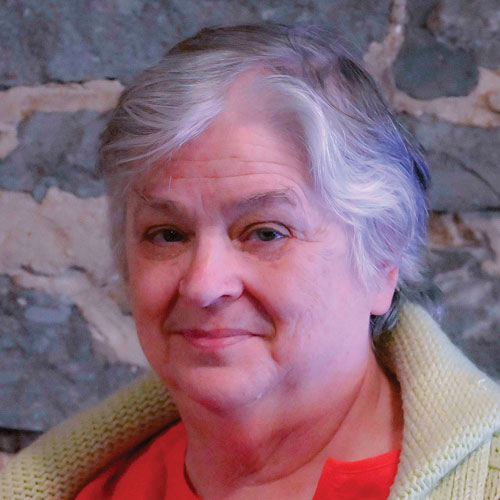
Carolyn Thompson Goddard, grew up in Chesterville and attended North Dundas District High School. After completing her BA in Political Science at Carleton University she has worked as a medical secretary and library technician. In 2020 she graduated from Algonquin College with a diploma in Journalism and has been a reporter and column writer for The Chesterville Record for over 10 years.


